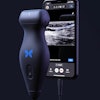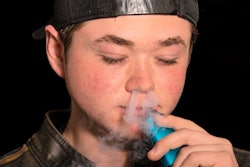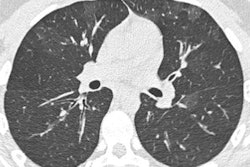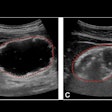Ultrasound shows that young people who vape -- even if they have no apparent signs of lung damage -- have lower capacity for exercise, according to research presented on 8 September at the European Respiratory Society (ERS) Congress in Vienna.
The study "adds to growing evidence that long-term use of vaping is harmful and challenges the idea that vaping could be a healthier alternative to smoking," the ERS said in a statement. The results were presented by Azmy Faisal, PhD, of Manchester Metropolitan University in the U.K. Faisal, who is a senior lecturer in cardiorespiratory physiology in the university's department of sport and exercise sciences, and his colleagues also found that the exercise capacity of young vapers was similar to that of young smokers.
"Previous research has shown that vaping is linked to lung inflammation and damage, and harmful changes to the blood vessels," he noted. "Although some research suggests that vaping could be used to cut back or quit smoking, we don't yet know what longer-term vaping use does to our bodies."
The Manchester team conducted a study that included 60 people in their 20s with normal lung function as assessed by spirometry testing. Of these, 20 were nonsmokers/nonvapers, 20 had been vaping for at least two years, and 20 had been smoking for at least two years. Each participant completed an exercise test on a static bike (which evaluates their heart, lung, and muscle responses at increasingly more challenging exercise levels) and underwent both blood tests and an ultrasound exam to assess artery function.
The investigators found that, on average, the study's vapers and smokers had a lower peak exercise capacity than those who did not vape or smoke. At peak exercise, vapers and smokers consumed less oxygen on average compared with those who did not vape or smoke.
As for blood vessel capacity assessed by blood tests and ultrasound, the vapers and smokers were "more out of breath, experienced intense leg fatigue and had higher levels of lactate in their blood, a sign of muscle fatigue, even before they reached their maximum level of exercise," Faisal's team reported.
| Exercise performance comparison, young nonsmokers vs. young smokers/vapers | ||
|---|---|---|
| Measure | Nonsmokers | Smokers/vapers |
| Peak exercise capacity | 226 watts | 186 watts |
| Oxygen consumption | 3 liters per minute | 2.7 liters per minute |
On ultrasound, vapers and smokers had lower flow-mediated dilatation (FMD%) of the brachial artery compared with their nonsmoking counterparts (5.4% vs. 7.9%).
"[Our study included] young people with no apparent signs of lung damage," Faisal noted. "Among the people who had been vaping or smoking for at least two years, we saw important differences in how well they coped with exercise … In this regard, our research indicated that vaping is no better than smoking."



















